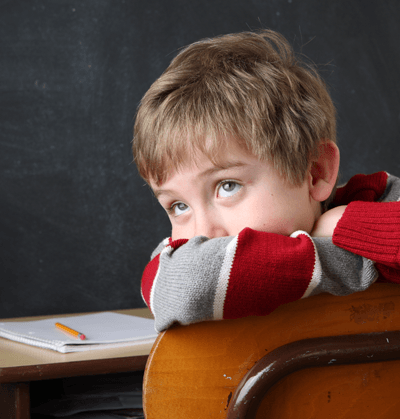Children With ADHD Realize Significant Benefits From Neurofeedback Training In a Randomized Clinical Trial
February 20th, 2009 · by cfisher
In a yet unpublished study (in press), researchers* report that children with ADHD who underwent neurofeedback training in a randomized clinical trial realized significant improvements on numerous home and school behavioral rating scales. The study included a large sample size, randomized assignment to an experimental or control group, semi-blinded parents to their child’s treatment condition, and great care to insure that all groups received equal treatment from the researchers. Why is this important? Many previous neurofeedback studies lack these type of experimental controls and/or have small samples. The more rigorous design used in the study under discussion today provides important empirical validation of neurofeedback and will probably go on to become a very important study for the field of neurofeedback and children with ADHD.
Researchers assigned 102 (94 completed the study) children (average age 9.6; age range of 8-12 years) who were drug free to 1 of 2 groups: neurofeedback or computerized attention training. Children in the neurofeedback group (experimental group) underwent 18 sessions of theta/beta training and 18 sessions of slow cortical potential (SCP) training. The researchers used a balanced design to control for order effects where some participants receive theta/beta protocols first, and the others receive SCP training first. The remaining children (control group) completed a reputable German-based computerized attention training program. The comparison of neurofeedback to an active treatment with known benefits certainly raises the bar and makes it more difficult to achieve statistically meaningful effects. Can you understand why? Now the potential benefits of neurofeedback are compared to a treatment that is already known to help improve ADHD (instead the usual placebo comparison). The equivalent would be to compare the benefits of an anti-depressant medication to Cognitive Behavioral Therapy (a therapy with known benefits) versus comparison to a sugar pill (placebo). Obviously, the anti-depressant could realize larger treatment effects when compared to the sugar pill. The researchers also smartly chose this computer-based attention training program to help control for a legitimate criticism of neurotherapy: that children simply learn compensatory strategies after they stare at a computer screen for long periods of time. Thus, any improvement in attention/concentration due to this factor would occur in both groups (since neurofeedback and computerized attention training involve computer screens) and essentially cancel out.
A few details about the protocols used this study that may interest neurotherapists. Theta/Beta neurofeedback consisted of a CZ inhibit theta (4-8Hz), reward beta (13-20Hz) protocol. SCP neurofeedback comprised 120 trails (50% negativity/50% positivity training) over the sensorimotor strip, presumably at Cz though this not specifically stated in the article. Children attended double sessions 3 times per week. Therapists were instructed to remain neutral in all interactions with participants.
The primary outcome measure was the total score on the German ADHD Rating Scale (called the FBB-HKS) as reported by parents and teachers. Several other parent and teacher rating scales commonly used in Germany served as additional outcome measures and covered a broad spectrum of various emotional and behavioral areas, such as inattention, hyperactivity, emotional difficulties, oppositional behavior, and homework behaviors. Please review the article for a complete listing of all areas assessed. Overall, the participants in the neurofeedback group experienced superior treatment results and were 2.68 times more likely to improve compared to the control group. Parental ratings suggested statistically significant improvements (technically called “difference scores” as used in this study) in hyperactivity/impulsivity, inattention, oppositional behavior, and delinquency/physical aggression. Teachers rated these same children to have statistically meaningful improvement in inattention and hyperactivity. The effect sizes for these reported improvements ranged from .34-.64 or “moderate” effect sizes (see side note below). Remember that gains attributable to neurofeedback were over and above a computer-based attention skills training program. I predict that large effect sizes would have been found if a no-treatment (placebo) group was used. Nonetheless, these are very impressive results.
Only a few criticisms come to mind. First, therapist and participants were not blinded to their condition. Double-blinded neurofeedback studies are extremely difficult to design for a number technical reasons that I will not discuss here and the researchers acknowledged that this simply may not be possible with neurofeedback. I suspect that this dilemma will eventually be solved. Next, I would have preferred that at least one neurofeedback group complete 36 sessions with a single protocol, preferably theta/beta. In the current study, children received only 18 sessions of a specific protocol before moving to a new protocol. While 18 sessions is certainly enough to start to see symptom improvement, this is probably not enough to benefit from a full course of treatment. Last, I would have liked to seen standardized continuous performance tests (i.e., TOVA, etc.) completed to provide further objective and normative evidence of symptom improvement.
On the positive side, this study suggests that neurofeedback can be effective with two sessions per day (”double sessions”) and administered to multiple patients in the same room (e.g., 2 children in the same room on different computers, presumably wearing headphones). Neurofeedback is labor intensive and requires considerable patient financial and time commitments. Double sessions cuts treatment time in half, and neurotherapists may be able to reduce fees if two children are seen together. This latter point raises confidentiality issues, but I’m sure an effective solution could be reached. After all, group therapy requires multiple patients in the same room.
CFisher
Side Note: I learned that Cohen’s D effect sizes over .50 are generally “large” effects, but I reported “moderate” as advocated by the researchers in the current study.
Reference:
*Gevensleben, H., Holl, B., Albrecht, B., Vogel, C., Schlamp, D., Kratz, O., Studer, P., Rothenberger, A., Moll, G., & Heinrich, H. (in press, 2009). Is neurofeedback an efficacious treatment for AHD? A randomized controlled clinical trial. The Journal of Child Psychology and Psychiatry.
